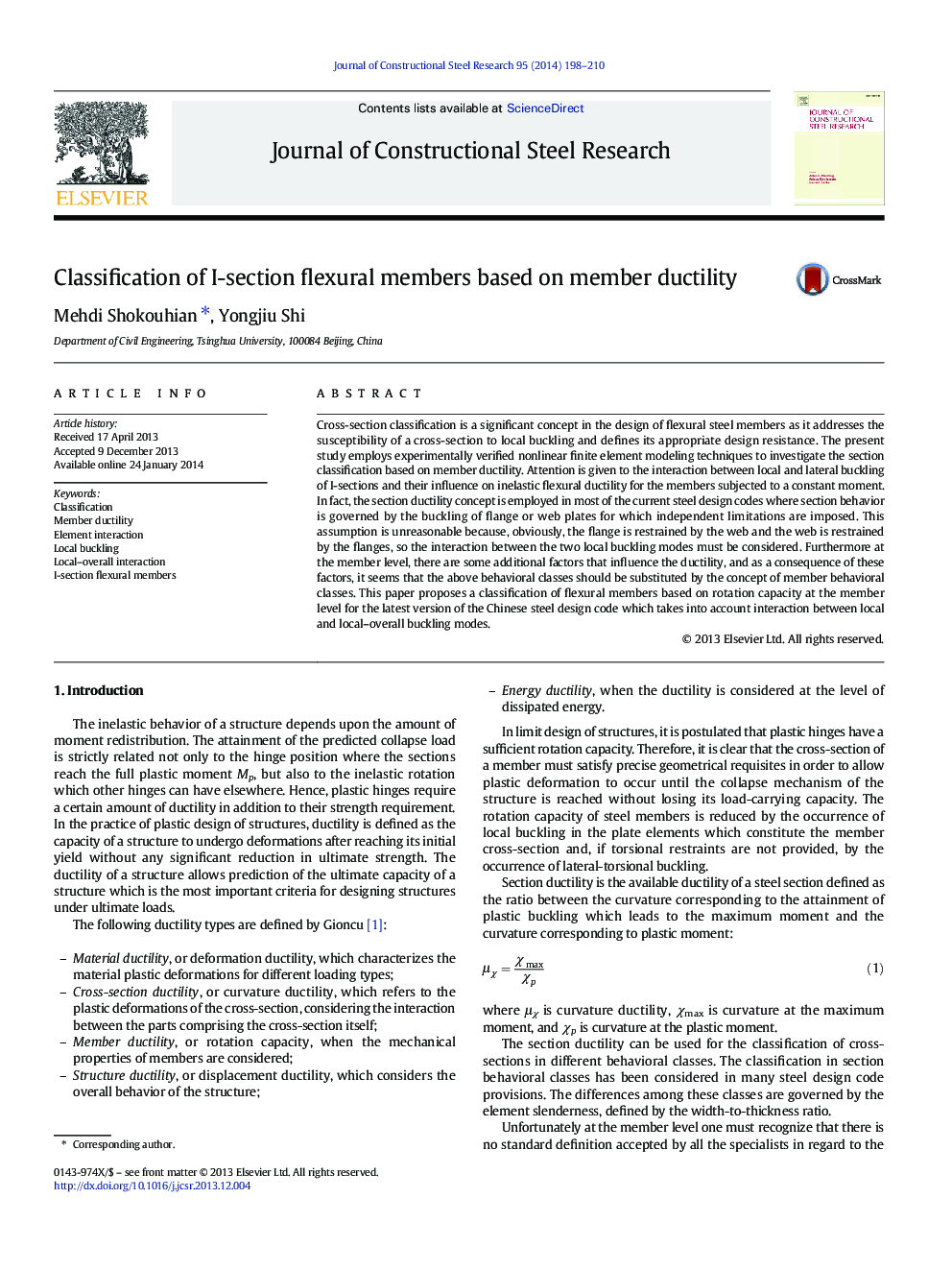| کد مقاله | کد نشریه | سال انتشار | مقاله انگلیسی | نسخه تمام متن |
|---|---|---|---|---|
| 284780 | 509163 | 2014 | 13 صفحه PDF | دانلود رایگان |

• Current design codes just pay attention to width to thickness ratio of elements.
• We account for interaction between local and overall buckling in classification.
• Considering member ductility concept is more appropriate in classification.
• Results show the flange slenderness limit ratios of Eurocode 3 are conservative.
Cross-section classification is a significant concept in the design of flexural steel members as it addresses the susceptibility of a cross-section to local buckling and defines its appropriate design resistance. The present study employs experimentally verified nonlinear finite element modeling techniques to investigate the section classification based on member ductility. Attention is given to the interaction between local and lateral buckling of I-sections and their influence on inelastic flexural ductility for the members subjected to a constant moment. In fact, the section ductility concept is employed in most of the current steel design codes where section behavior is governed by the buckling of flange or web plates for which independent limitations are imposed. This assumption is unreasonable because, obviously, the flange is restrained by the web and the web is restrained by the flanges, so the interaction between the two local buckling modes must be considered. Furthermore at the member level, there are some additional factors that influence the ductility, and as a consequence of these factors, it seems that the above behavioral classes should be substituted by the concept of member behavioral classes. This paper proposes a classification of flexural members based on rotation capacity at the member level for the latest version of the Chinese steel design code which takes into account interaction between local and local–overall buckling modes.
Journal: Journal of Constructional Steel Research - Volume 95, April 2014, Pages 198–210